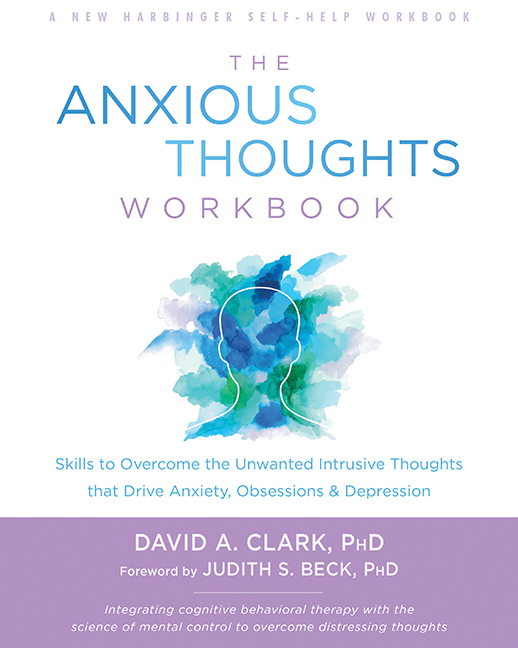Everyone’s a spontaneous thinker, but there are times when our intrusive thoughts take on a negative or threatening quality. This can be very distressing. When these mental intrusions get stuck in the mind, they become important contributors to emotional disorders like anxiety, fear, and even depression. Unfortunately, conventional cognitive behavioral therapy (CBT), and even mindfulness, fail to address the unique characteristics of intrusive thinking. Any negative, unacceptable thought, image, or memory that spontaneously pops into the mind, interrupts concentration, and is difficult to ignore can become a highly adhesive or “sticky” mental intrusion. Once intrusions become “stuck in the mind,” the paradox of mental control takes over. The harder you try to control the intrusion, the more you’re drawn to it. So, a cognition like “I don’t want to do anything” will require a different therapeutic approach if it occurs as an unintended, spontaneous thought rather than a deliberate form of depressive thinking. The following are the main elements of a mental control approach to “sticky” intrusive thoughts.
1. Normalize intrusive thinking. Through Socratic questioning and homework assignments, clients learn that spontaneous thinking, whether positive or negative, is a normal aspect of the human thought process.
2. “Detoxify” the intrusion meaning. Here the therapist works on the misinterpretation of personal significance responsible for turning the unintended thought into a “toxic” form of thinking. Elements of cognitive restructuring are utilized so the client develops an alternative, “detoxified” understanding of the spontaneous thought. The goal is normalization of the intrusion; to view the intrusion as a benign, meaningless, or, at least, less significant unwelcomed guest of the mind.
3. Relinquish mental control. Finally, the therapist uses experiential exercises and homework to demonstrate the “paradox of mental control.” From this the client experiences the futility of intentional mental control and learns more effective mental control strategies—such as focused distraction—for unwanted mental intrusions.
This exercise is a great tool that can help give your clients perspective, and the courage to take responsibility for what they are most responsible for—themselves!
 David A. Clark, PhD, is a practicing clinical psychologist and professor emeritus at the University of New Brunswick, Canada. He is author or coauthor of numerous scientific articles and nine books on depression, anxiety, and obsessive-compulsive disorder (OCD), including The Mood Repair Toolkit, The Anxiety and Worry Workbook (with Aaron T. Beck),Overcoming Obsessive Thoughts (with Christine Purdon), and The Anxious Thoughts Workbook.
David A. Clark, PhD, is a practicing clinical psychologist and professor emeritus at the University of New Brunswick, Canada. He is author or coauthor of numerous scientific articles and nine books on depression, anxiety, and obsessive-compulsive disorder (OCD), including The Mood Repair Toolkit, The Anxiety and Worry Workbook (with Aaron T. Beck),Overcoming Obsessive Thoughts (with Christine Purdon), and The Anxious Thoughts Workbook.

 Part 2: What to Do When a Client Is Participating in Self-Judgment?
Part 2: What to Do When a Client Is Participating in Self-Judgment?